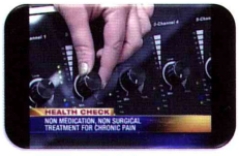New Payment Model for Pain Rehab Programs
Minnesota Leads Nation in Developing New Payment Model for Pain Rehab Programs
This past summer, Minnesota Governor Mark Dayton signed into law an omnibus health and human services budget bill and in so doing he marked a significant milestone in the recent history of chronic pain management. The bill contained language, introduced by State Representative Deb Kiel and State Senator Jim Abler, authorizing the trial of a new payment arrangement through Medical Assistance, which makes it possible for state recipients of the public health insurance to receive care within an interdisciplinary chronic pain rehabilitation program.
The increasingly pressing need for effective alternatives to prescription opioid medications for the management of pain fueled the passage of the provision.
In over a three year effort, a number of additional organizations and individuals pooled resources to ensure passage of the bill, including: the Minnesota Department of Human Services’ Health Services Advisory Council, led by Jeff Schiff, MD, and Ellie Garret, JD, which authorized the state to seek to increase use of non-pharmacological, non-invasive pain therapies among Medical Assistance recipients; the Institute for Chronic Pain; Courage Kenny Rehabilitation Institute; State Representatives Matt Dean, Dave Baker, Mike Freiberg, and State Senator Chris Eaton. To our knowledge, with the passage of the bill, Minnesota became the first state in the nation in recent history to pay for an interdisciplinary chronic pain rehabilitation program in a viable manner through Medical Assistance.
The problem until now
Interdisciplinary chronic pain rehabilitation programsare a traditional, empirically-supported treatment for people with chronic pain conditions. The focus of the care is to assist patients in acquiring the abilities to successfully self-manage pain without the use of opioid medications and return to work or other meaningful, regular activity. Multiple physical and psychological therapies performed on a daily basis for three to four weeks constitute typical chronic pain rehabilitation programs. An interdisciplinary staff of pain physicians, pain psychologists, physical therapists, nurses, social workers and others deliver the different therapies. Research over the last four decades has shown that such programs are highly effective (Gatchel & Okifuji, 2006). Indeed, in 2014, the American Academy of Pain Medicine dubbed such programs the “gold standard” of care for those with chronic pain.
Despite the long-standing research base supporting its effectiveness, interdisciplinary chronic pain rehabilitation programs have historically faced obstacles to obtain adequate insurance reimbursement (Gatchel, McGreary, McGreary, & Lippe, 2014). Component therapies within such programs, when billed on a per therapy basis, are commonly reimbursed at below cost or not reimbursed at all. These low rates of reimbursement make it unviable for chronic pain rehabilitation programs to survive if they accept such reimbursement.
Historically, chronic pain rehabilitation programs have gotten around this problem by repetitively proving their superior outcomes through research and using this research to negotiate “bundled” payment arrangements with individual insurers within each state. The bundled payment is typically one fee for all the services delivered over an agreed upon time frame (usually, as indicated, for three to four weeks). Worker’s compensation and most commercial insurers pay for chronic pain rehabilitation programs in this manner.
State Medical Assistance programs over the last few decades have refrained from negotiating such bundled payment arrangements, due to lack of legislative authority to provide such arrangements. As a result, they’ve pursued more customary reimbursement practices. As indicated, though, such customary reimbursement effectively makes accepting the public health insurance unviable for interdisciplinary chronic pain rehabilitation programs. As a result, recipients of Medical Assistance were cut off from being able to receive this effective form of chronic pain management for many years.
During this time, society has also witnessed the onset of alarming epidemics of opioid-related addiction and death (CDC, 2017; SAMHSA, 2016). It is generally accepted that the impetus for these epidemics has been the large-scale adoption of the practice of prescribing opioid medications for acute and chronic, benign pain that began late last century and continues to this day.
These epidemics have led to increasing societal demand for safe, effective non-opioid options for the management of pain.
With the passage of the Minnesota bill, patients who have state-funded Medical Assistance insurance within Minnesota can now obtain chronic pain management that effectively helps them eliminate the need for opioid medications and return to work or other valued life activities, such as returning to school, job re-training or volunteering.
Not just a local problem
The importance of Minnesota’s legislative action to develop and trial a new payment arrangement for an interdisciplinary chronic pain rehabilitation program is highlighted by the fact that it’s a solution to a problem that is long-standing and widespread. This problem is not isolated, in other words, to the time and place of Minnesota in the year 2017. In other states throughout the nation, chronic pain rehabilitation programs face the problem of telling patients who would benefit that their insurance will not cover the cost of the program and as such would have to pay out of pocket if they attend. To be sure, most patients in this predicament choose to forego the therapy and resort to continuing their use of opioid medications for the management of their pain.
State-funded Medical Assistance programs are not the only insurer that has failed to cover interdisciplinary chronic pain rehabilitation programs. Medicare and some large commercial plans in the nation either do not cover such programs or only do so in a cost prohibitive way. As such, chronic pain rehabilitation programs and many would-be patients face the dilemma of being unable to access a therapy that could go a long way to resolving the epidemics of addiction and death associated with the opioid management of pain.
This problematic insurance reimbursement for interdisciplinary chronic pain rehabilitation programs has had significant consequences for the availability of such programs nation-wide. Because different insurers over the years have not covered chronic pain rehabilitation in a viable manner, many programs have struggled to remain open. While estimates vary, the number of interdisciplinary chronic pain rehabilitation programs in operation has dropped precipitously over the last two decades (Gatchel, McGreary, McGreary, & Lippe, 2014; Schatman, 2012).
This problem of reimbursement is both ironic and tragic at the same time. For the last two decades, we as a society have had a safe and effective alternative to the use of opioids for chronic pain and yet many people cannot access them because state-funded Medical Assistance programs, or Medicare, or some commercial insurance do not reimburse for them. All these insurers readily pay for opioid medication management, with all its adverse consequences, but not for chronic pain rehabilitation programs that show patients how to manage pain without the use of opioids. This irony becomes all the more tragic considering how many lives could have been saved from addiction and accidental death had people been allowed to access chronic pain rehabilitation programs as a substitute to opioid management.
Not yet a permanent solution
The bill, as passed, provides authorization of a two-year trial of a bundled payment arrangement for a chronic pain rehabilitation program within the state of Minnesota. Its intent is to provide demonstration of the effectiveness of both this type of treatment and its corresponding type of insurance reimbursement. In turn, this subsequent data will provide lawmakers with further justification to make it a permanent benefit within Medical Assistance. The long-term goal would be to bring Medical Assistance in Minnesota into alignment with the current reimbursement practices of most commercial and worker’s compensation insurers in the state.
Article Provided By: Institute for Chronic Pain

If you would like to discuss what Carolina Pain Scrambler do to help relieve your chronic pain symptoms or receive more information on our treatment process, please do not hesitate to call us at 864-520-5011 or you can email us at info@carolinapainscrambler.com









 Pain Scrambler MC-5A Scrambler Treatment is innovative pain treatment method especially for incurable chronicle pain treatment, besides neural pain and chronicle pain. is invented. Generally it applies to patients who are either dumb to all formal pain treatment and medicine treatment or careful of side effect of medicine, has no side effects, and can be expected to direct effective treatment effect.
Pain Scrambler MC-5A Scrambler Treatment is innovative pain treatment method especially for incurable chronicle pain treatment, besides neural pain and chronicle pain. is invented. Generally it applies to patients who are either dumb to all formal pain treatment and medicine treatment or careful of side effect of medicine, has no side effects, and can be expected to direct effective treatment effect.
 WSA UTAH State TV KSL-TV 5 News(2011.03.16)
WSA UTAH State TV KSL-TV 5 News(2011.03.16) NBC-TV 10 News USA Rhode Island State TV(2012.03.13)
NBC-TV 10 News USA Rhode Island State TV(2012.03.13) SBS News – TV
SBS News – TV



